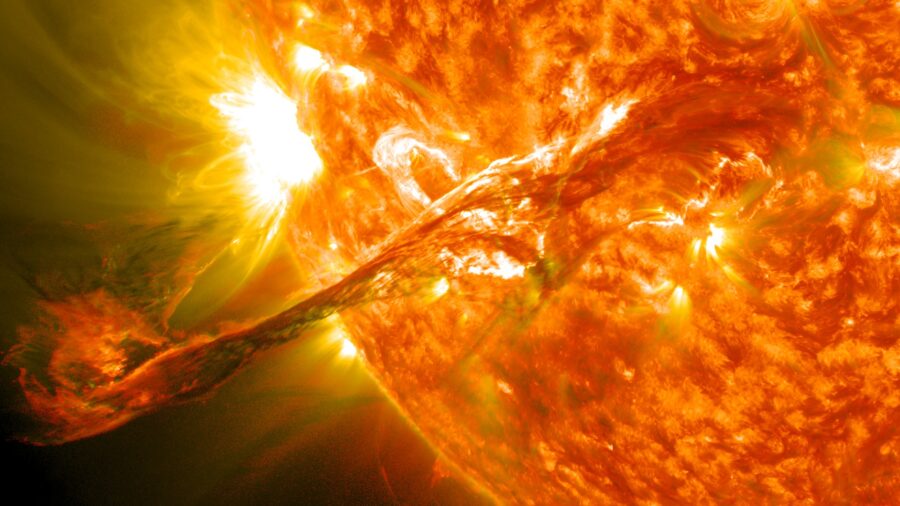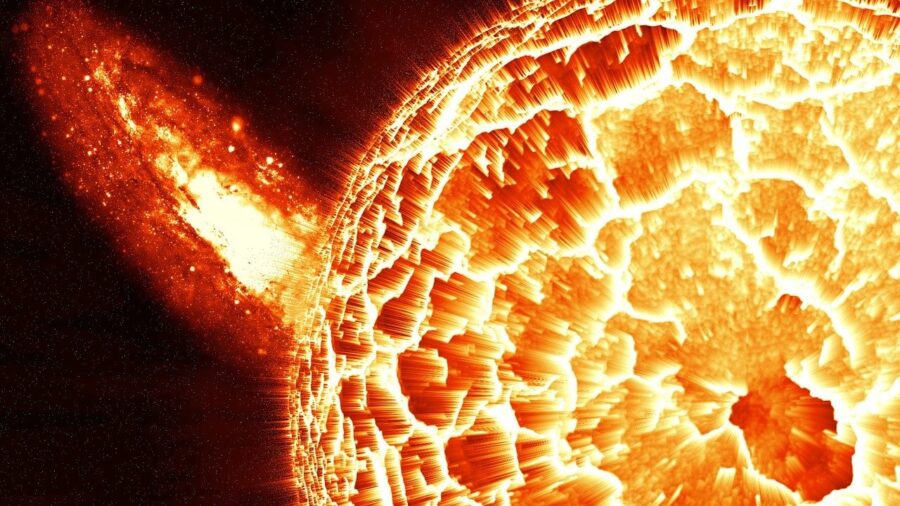See Wild Video Of Probe Going Through Massive Solar Eruption

Few pass through a solar eruption and live to tell the tale. Actually, nothing has – until now. ScienceAlert reports that NASA’s Parker Solar Probe not only survived an encounter with a coronal mass ejection (CME), it caught the whole thing on video.
NASA’s Parker Solar Probe went through the shockwave of a solar eruption, something never before recorded at this distance.
The probe first detected the solar eruption about 5.7 million miles from the sun’s surface – too close for comfort by anything else’s standards. As it continued its surveillance, it passed through the solar eruption shockwave.
This CME was one of the biggest ever recorded, with particles traveling at 840 miles per second. That is a middling speed for such blasts if you can believe it, but not the speed at which you would want to encounter plasma particles.
The Parker Probe, on the other hand, takes the blast like a champ. Studying the sun is not for the faint of heart, and engineers smart enough to know that this day would come designed the vessel with a special heat shield and a system that protects it from the emissions of the sun – even a massive solar eruption.
Parker is the fastest spacecraft ever engineered, but it is arguably also the toughest. It can get within 4 million miles of the sun; for reference, Earth is more than 93 million miles away from its own star, and even Mercury only dares get within 28 million miles.

Astonishing footage captured by the probe looks like something out of Star Trek. It would be difficult to discern what was happening in the footage without already knowing, but there is no doubt that whatever is happening, it is mighty. The solar eruption event was recorded last year, but it was only just released by the Johns Hopkins Applied Physics Laboratory.
The Parker Probe is built to withstand solar eruptions, letting it get within 4 million miles of the Sun; for context, Mercury is 28 million miles away.
Findings from the Parker Probe illuminate the sun’s subject for scientists, and this solar eruption close-up may offer valuable insight into CMEs. These jets of plasma fire charged particles that, should they strike Earth, can cause all kinds of problems. Data collected by the Parker Probe is helping scientists understand the driving force behind these particles’ incredible speed.
Parker measures solar eruption events, but it also collects data about their impact on their surroundings. Specifically, scientists are observing the effects of a CME on space dust.
Solar eruptions can reach amazing speeds, with the run recorded by the Parker Probe only registering at 840 miles per second, slow for a blast from the Sun.
Findings are beginning to indicate that interplanetary dust impacts the size, shape, and speed of CMEs. A better understanding of such a relationship could offer helpful tools for predicting so-called space weather. Given the destructive potential of a solar eruption for the inhabitants of little ol’ Earth, better prediction models sound like a good idea.
Space is a wild place, and the technology that helps us observe it is in a league of its own. The Parker Probe is an engineering feat and a valuable tool for understanding the molten death trap we orbit. Whether taking video of a solar eruption or clocking the speed of space dust, the Parker Probe is earning its keep.












